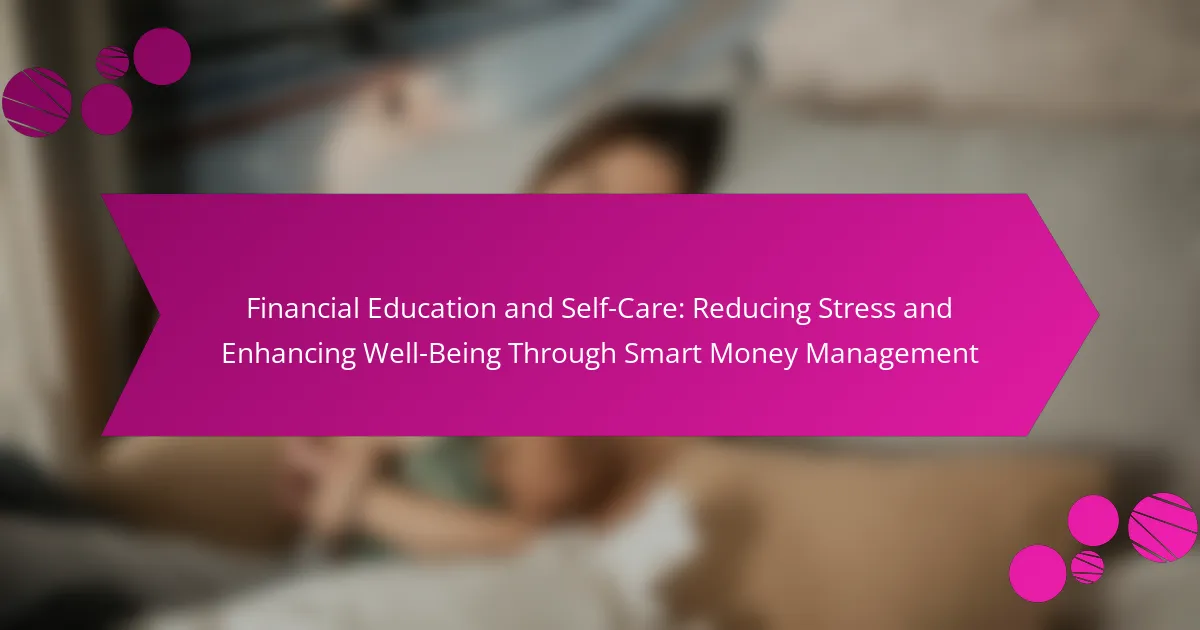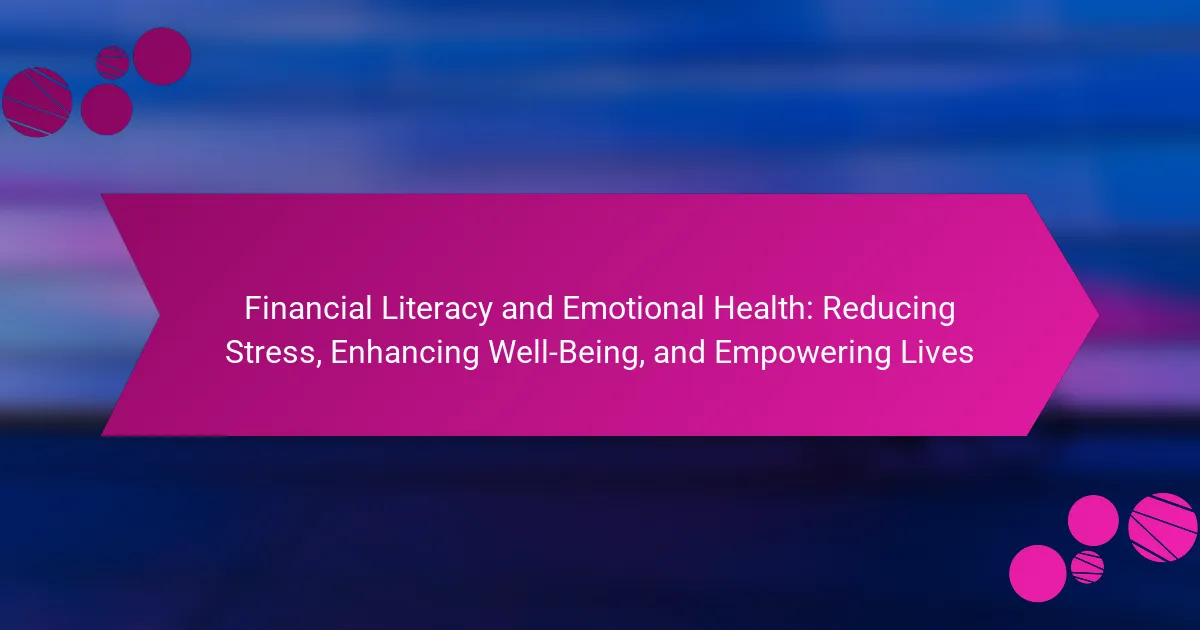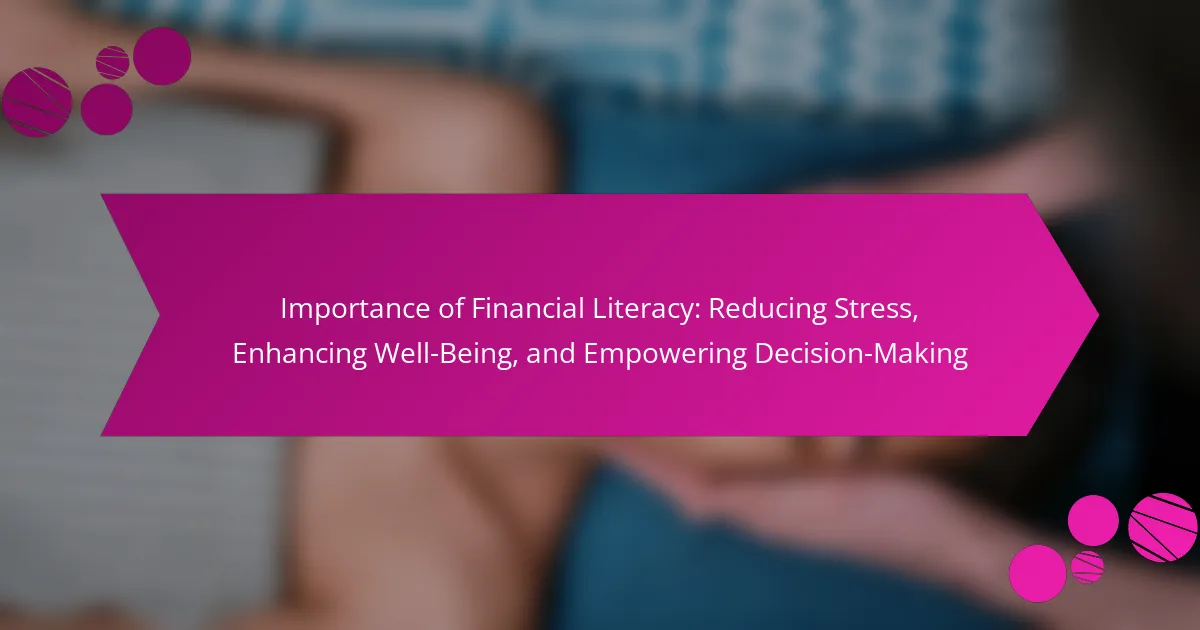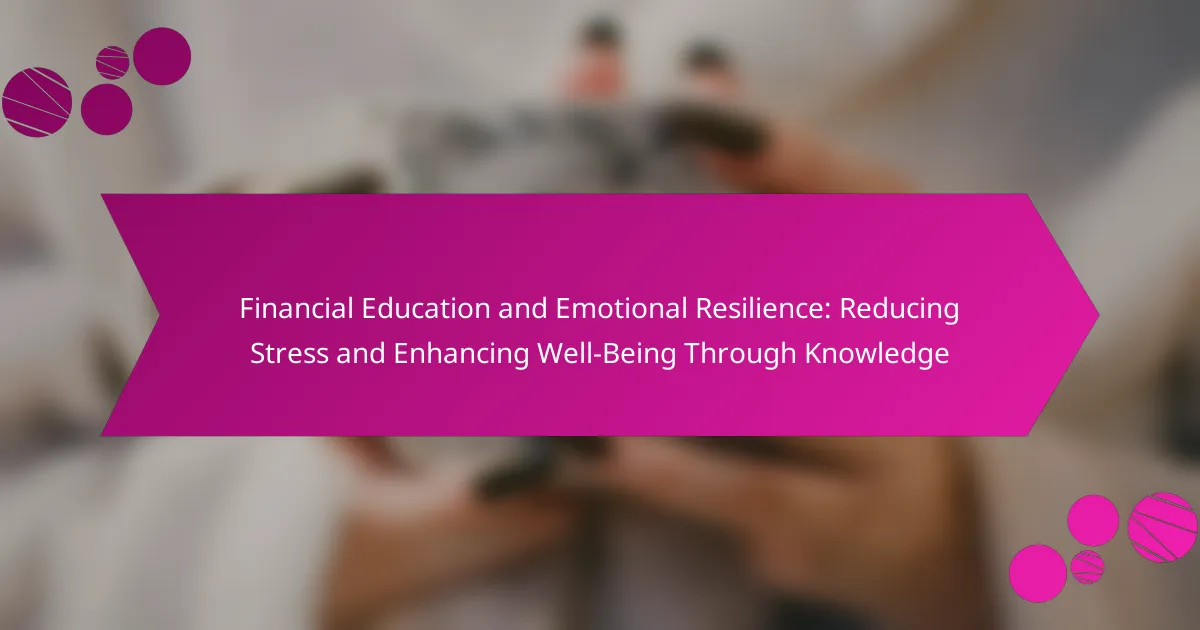Financial education is crucial for enhancing self-confidence and reducing stress related to money management. It equips individuals with essential knowledge, fostering informed decision-making and greater financial stability. By understanding budgeting, saving, and investing, people can set and achieve personal financial goals. Additionally, personalized learning experiences and community engagement initiatives further empower individuals, promoting overall well-being.
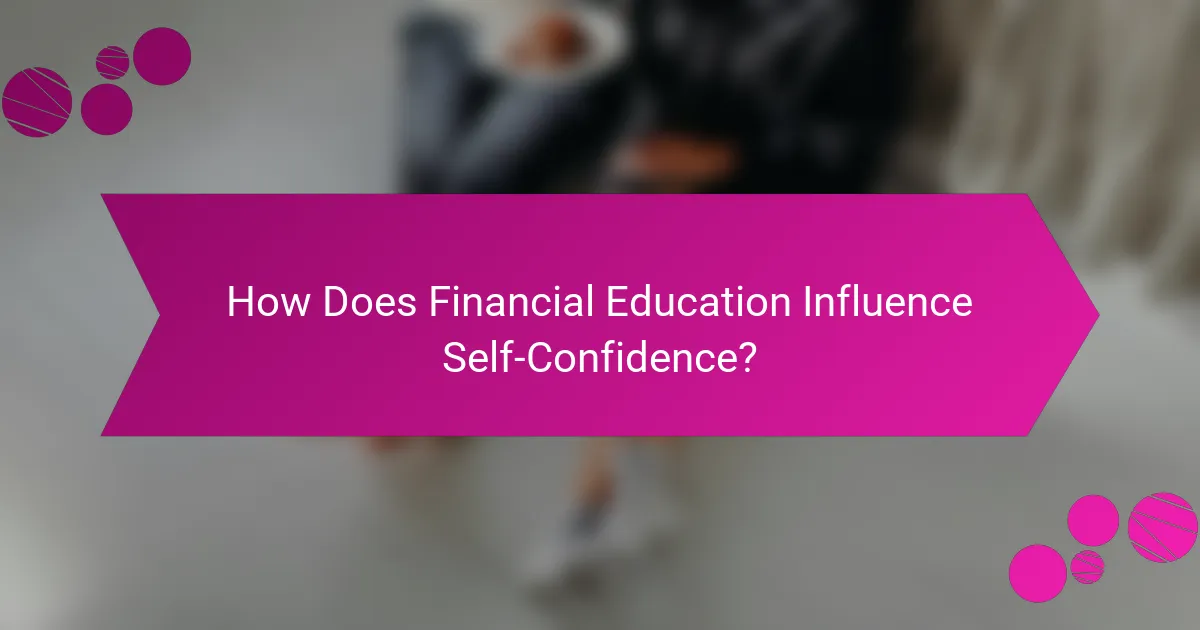
How Does Financial Education Influence Self-Confidence?
Financial education significantly enhances self-confidence by equipping individuals with essential financial knowledge. This knowledge reduces anxiety related to money management and fosters a sense of control over personal finances. As a result, individuals experience improved well-being and decision-making capabilities. Studies show that financial literacy leads to better financial behaviors, which further boosts self-esteem. By understanding budgeting, saving, and investing, individuals feel empowered to achieve their financial goals.
What are the key components of financial education?
Key components of financial education include budgeting, saving, investing, and understanding credit. These elements empower individuals to make informed financial decisions, enhancing self-confidence and reducing stress. Knowledge in these areas leads to better financial well-being.
In what ways does self-confidence impact financial decision-making?
Self-confidence significantly enhances financial decision-making by fostering a proactive approach and reducing anxiety. Confident individuals tend to seek out financial education, leading to informed choices. They are more likely to invest, manage budgets, and negotiate effectively. As a result, improved self-confidence correlates with better financial outcomes and overall well-being.
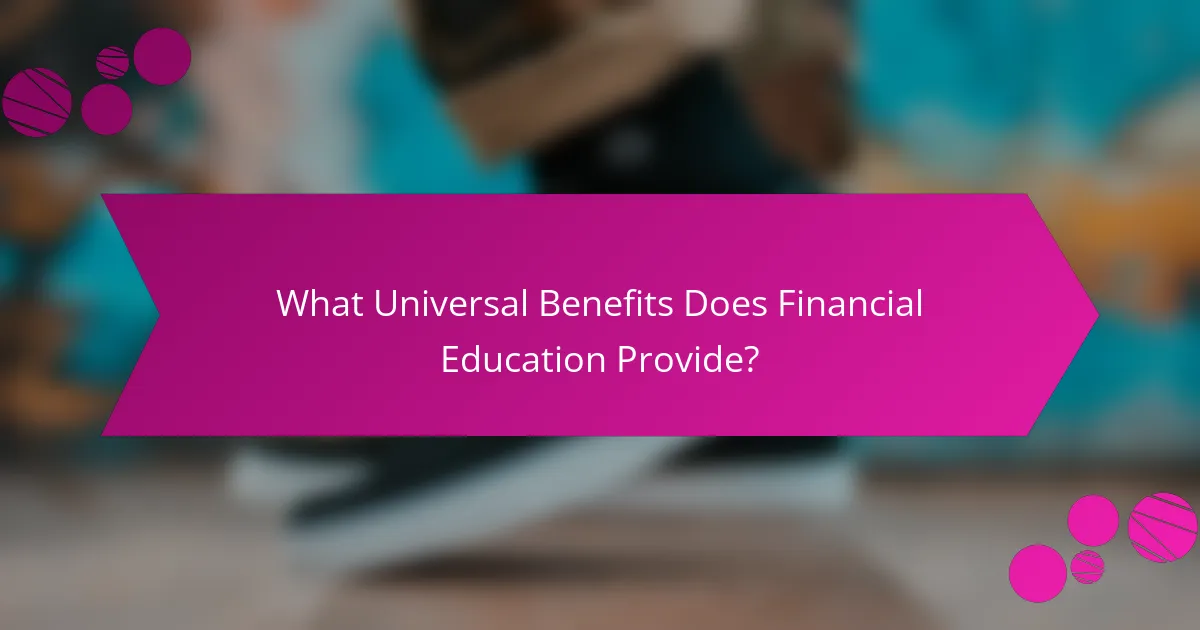
What Universal Benefits Does Financial Education Provide?
Financial education enhances self-confidence, reduces stress, and improves overall well-being. Individuals equipped with financial knowledge make informed decisions, leading to greater financial stability. As a result, they experience lower anxiety related to money management. Studies indicate that financial literacy directly correlates with increased self-esteem and life satisfaction. Furthermore, understanding financial concepts empowers individuals to set and achieve personal goals, fostering a sense of control over their lives.
How does financial literacy reduce stress levels?
Financial literacy significantly reduces stress levels by empowering individuals to manage their finances effectively. Knowledge of budgeting, saving, and investing enhances self-confidence, leading to better financial decisions. As a result, individuals experience lower anxiety related to financial uncertainty. Studies indicate that financially literate individuals report higher overall well-being and reduced stress, as they feel more in control of their financial situations. This empowerment fosters a sense of security, allowing individuals to focus on other aspects of their lives without the burden of financial worries.
What role does knowledge play in enhancing well-being?
Knowledge significantly enhances well-being by empowering individuals with financial education, leading to increased self-confidence and reduced stress. Financial literacy equips people with the skills to manage their finances effectively, resulting in informed decision-making. As a result, individuals experience a greater sense of control over their financial situations, which directly contributes to improved mental health. Studies show that individuals with higher financial knowledge report lower levels of anxiety and stress related to financial issues. Furthermore, this knowledge can foster a sense of security and stability, enhancing overall well-being.
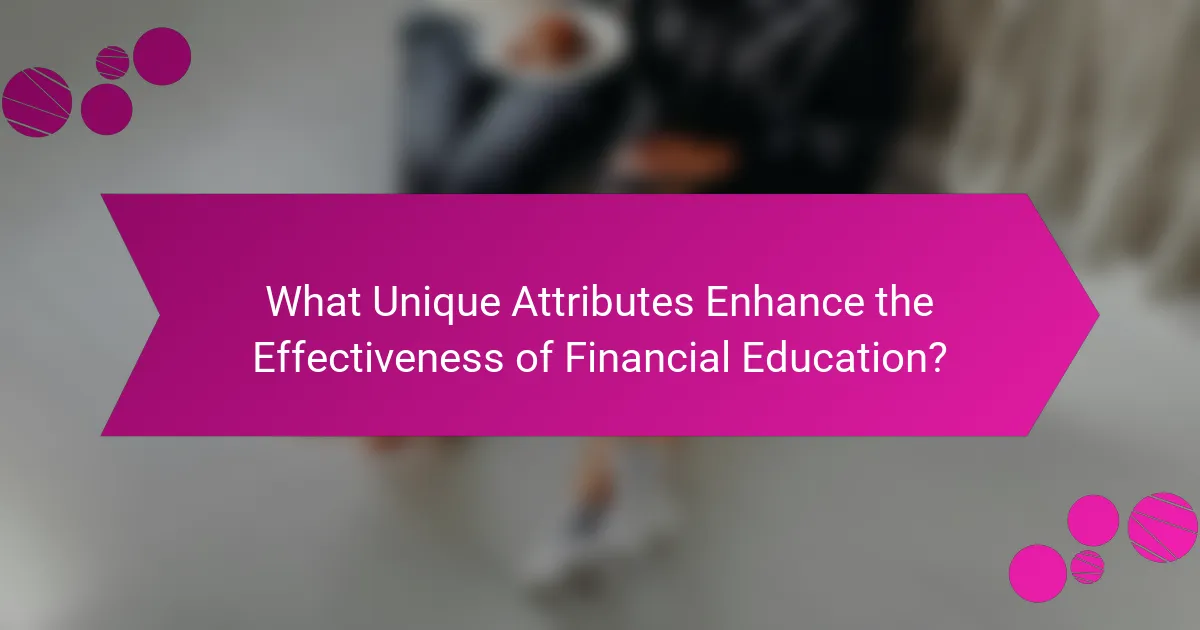
What Unique Attributes Enhance the Effectiveness of Financial Education?
Financial education enhances effectiveness through unique attributes like practical application, personalized learning, and accessibility. These aspects build self-confidence, reduce stress, and improve overall well-being. Practical application allows individuals to implement knowledge in real-life situations, while personalized learning caters to diverse financial backgrounds and goals. Accessibility ensures that financial education reaches a broader audience, fostering inclusivity and empowerment.
How do personalized financial plans affect stress management?
Personalized financial plans significantly reduce stress by providing clarity and control over finances. They enhance self-confidence, enabling individuals to make informed decisions. Research indicates that individuals with tailored financial strategies experience lower anxiety levels and improved well-being. By understanding their financial situation, people can better manage unexpected expenses and plan for future goals, fostering a sense of security.
What impact do community resources have on financial education outcomes?
Community resources significantly enhance financial education outcomes by providing access to knowledge and support. They foster self-confidence, reduce stress, and improve overall well-being. For instance, workshops and mentorship programs offer practical skills and personalized guidance, enabling individuals to make informed financial decisions. Research indicates that participants in community-based financial education programs report higher levels of confidence and lower stress regarding financial matters. Such resources create a supportive environment that encourages continuous learning and application of financial principles.
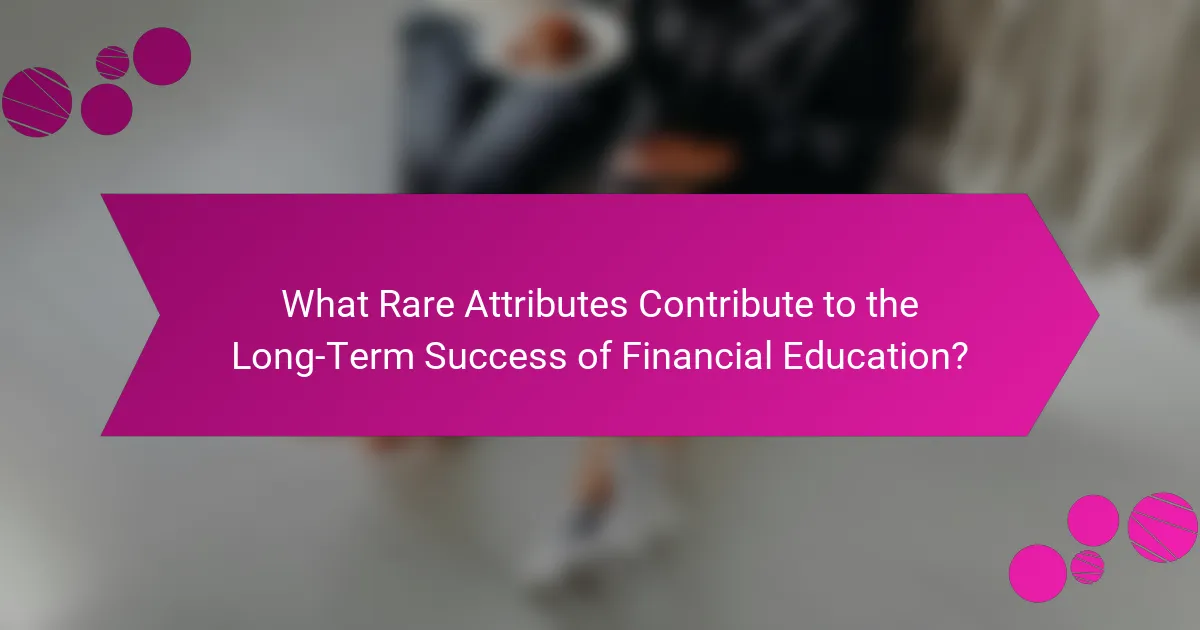
What Rare Attributes Contribute to the Long-Term Success of Financial Education?
Rare attributes that contribute to the long-term success of financial education include personalized learning experiences, adaptive curriculum design, and community engagement initiatives. Personalized learning experiences cater to individual learning styles, enhancing retention and application of knowledge. Adaptive curriculum design allows for real-time adjustments based on learner progress, ensuring relevance and effectiveness. Community engagement initiatives foster a supportive environment, promoting shared learning and accountability. These attributes collectively enhance self-confidence, reduce stress, and improve overall well-being through informed financial decision-making.
How do cultural factors influence financial education effectiveness?
Cultural factors significantly affect the effectiveness of financial education by shaping attitudes and behaviors toward money. Different cultures prioritize various aspects of financial literacy, influencing how individuals perceive financial information.
Cultural norms can dictate the value placed on financial education. For instance, cultures that emphasize collectivism may focus on communal financial practices, while individualistic cultures might prioritize personal financial management. This can affect engagement levels in financial education programs.
Language barriers and varying levels of trust in financial institutions also play a role. In cultures with limited access to financial resources, skepticism towards financial education can hinder participation. Tailoring financial education to address these cultural nuances enhances its relevance and effectiveness.
Moreover, the integration of culturally relevant examples and case studies can improve comprehension. When financial concepts resonate with participants’ cultural backgrounds, they are more likely to apply the knowledge, fostering self-confidence and reducing financial stress.
What innovative teaching methods can improve financial literacy?
Innovative teaching methods that enhance financial literacy include experiential learning, gamification, and peer-to-peer teaching. Experiential learning allows students to engage in real-life financial scenarios, fostering practical skills. Gamification introduces competitive elements, making learning enjoyable and motivating. Peer-to-peer teaching encourages collaboration, building confidence and reinforcing knowledge through discussion. Each method contributes to improved self-confidence, reducing stress related to financial management.
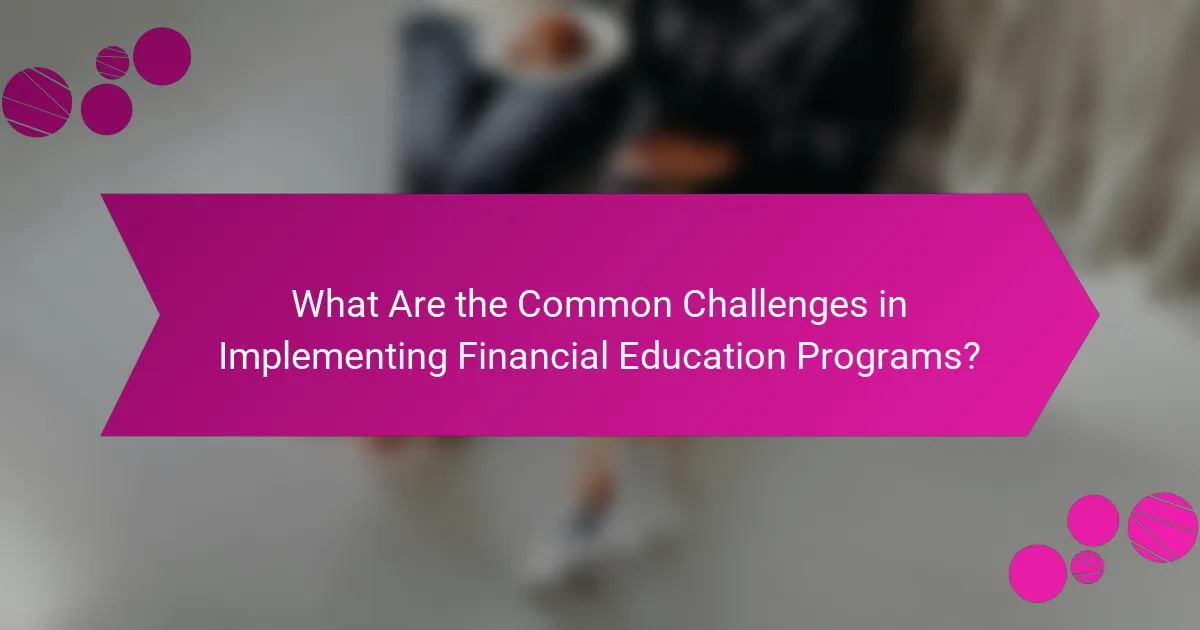
What Are the Common Challenges in Implementing Financial Education Programs?
Implementing financial education programs often faces several challenges. Key obstacles include lack of engagement, inadequate resources, and varying participant backgrounds.
Limited engagement can stem from participants not seeing the immediate relevance of financial education to their lives. Inadequate resources, such as funding and trained educators, hinder program effectiveness. Additionally, diverse backgrounds among participants can lead to differing levels of financial literacy, making it difficult to tailor content appropriately.
As a result, these challenges can diminish the program’s impact on enhancing self-confidence and reducing stress related to financial management. Addressing these challenges is crucial for maximizing the benefits of financial education.
How can barriers to access be addressed?
Barriers to access can be addressed through targeted financial education and confidence-building initiatives. These programs empower individuals by enhancing their knowledge and skills, leading to reduced stress and improved well-being. For example, workshops can teach budgeting, saving, and investing, making financial concepts more approachable. As a result, individuals gain the confidence to make informed decisions, ultimately increasing their access to financial resources.
What strategies can enhance engagement in financial education?
Engagement in financial education can be enhanced through interactive learning, practical applications, and community involvement. Interactive tools like budgeting apps and simulation games make learning engaging. Practical applications, such as real-life budgeting exercises, empower individuals to apply knowledge immediately. Community involvement fosters support and shared learning experiences, which can strengthen confidence and reduce stress.
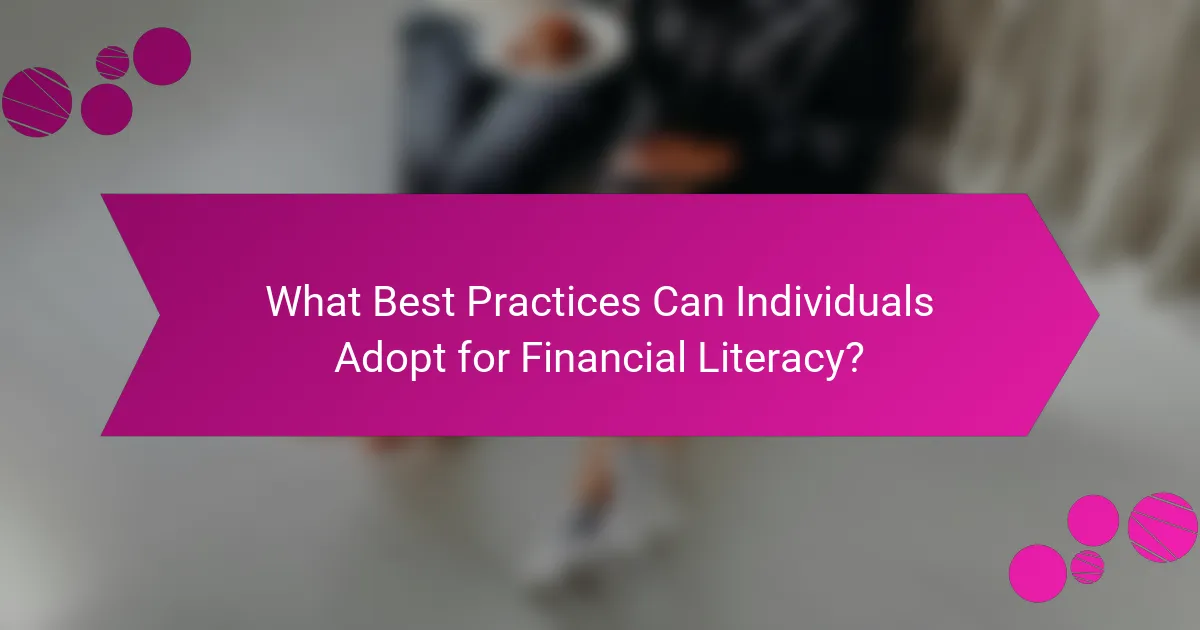
What Best Practices Can Individuals Adopt for Financial Literacy?
Individuals can adopt several best practices for financial literacy to enhance their self-confidence and reduce stress. First, they should set clear financial goals to create a roadmap for their financial journey. Regularly tracking expenses helps identify spending habits and areas for improvement. Engaging in continuous education through books, workshops, or online courses deepens knowledge and builds confidence. Utilizing budgeting tools can simplify financial management and provide insights into cash flow. Lastly, seeking advice from financial professionals can offer personalized strategies and enhance decision-making skills.
How can one create a personalized financial education plan?
To create a personalized financial education plan, assess your current financial knowledge and identify specific goals. Start by determining the areas of finance you want to improve, such as budgeting, investing, or retirement planning. Next, select resources tailored to your learning style, including books, courses, or workshops. Set a timeline for your education, allocating consistent time weekly for study. Finally, track your progress and adjust the plan as needed to ensure it meets your evolving financial needs.
What are the most common mistakes to avoid in financial learning?
The most common mistakes to avoid in financial learning include neglecting budgeting, underestimating the importance of saving, and failing to diversify investments. Many individuals overlook the necessity of a budget, which is essential for tracking expenses and income. Additionally, not prioritizing savings can lead to financial stress, especially during emergencies. Lastly, concentrating investments in a single area increases risk; diversification is crucial for financial stability and growth.
How to assess your current financial knowledge?
To assess your current financial knowledge, evaluate your understanding of key concepts, tools, and strategies. Start by identifying areas such as budgeting, investing, and debt management. Use self-assessment quizzes or financial literacy tests available online to gauge your proficiency. Reflect on your comfort level with financial decisions, seeking feedback from trusted sources. Additionally, consider tracking your financial goals and reviewing your progress regularly. This approach builds self-confidence and reduces financial stress, enhancing overall well-being.
What resources are available for continuous financial education?
Various resources are available for continuous financial education, enhancing self-confidence and reducing stress. Online courses, webinars, and financial literacy websites offer structured learning. Books and podcasts provide in-depth insights and diverse perspectives. Community workshops and local classes foster practical skills and networking. Financial apps and tools facilitate ongoing learning and tracking progress. Professional advisors can offer personalized guidance tailored to individual needs.
